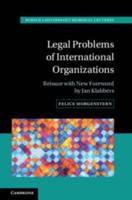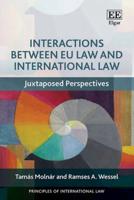Publisher's Synopsis
In the 21st century, competition for natural resources has taken on a new geopolitical and economic dimension. As the world transitions towards an economy based on electrification and renewable energies, certain strategic minerals, such as lithium, cobalt, nickel, and rare earth elements, have become fundamental components for technological development, the semiconductor industry, and the national security of major powers. These resources are essential for the production of electric vehicle batteries, wind turbines, solar panels, advanced electronic devices, and defense systems, which has increased their strategic value and influence in international relations.
In this context, China, the United States, and the European Union have intensified their strategies to secure the supply of these critical resources, leading to a new global competition: the "New Great Game." China, which currently dominates much of the rare earth market and the refinement of strategic minerals, has used its advantage in the supply chain as a tool of geopolitical influence. Through investments in Africa, Latin America, and Asia, Beijing has consolidated its access to key deposits, while its export control policies have raised concerns in the West about the vulnerability of supply chains.
For their part, the United States and the European Union have responded with efforts to reduce their dependence on China by diversifying suppliers, boosting domestic mining, and strengthening strategic alliances with resource-rich countries such as Australia, Canada, and some Latin American states. Programs such as the "Inflation Reduction Act" in the U.S. and the "European Critical Raw Materials Act" in the EU aim to promote local production and secure the supply of these essential materials for energy transition and the technology industry.
In turn, Latin America and Africa have emerged as key arenas in this competition, given their abundant supply of critical minerals. Countries such as Chile, Argentina, and Bolivia, with vast lithium reserves, have sought to establish exploitation models that maximize national benefits and reduce foreign exploitation, while in Africa, nations like the Democratic Republic of Congo have become centers of economic and political disputes due to their cobalt production.
The "New Great Game" is not only a struggle for access to resources but also for control over the technology and infrastructure necessary for their processing and utilization. The growing rivalry has generated diplomatic tensions, trade restrictions, and reindustrialization strategies in the West to diminish dependence on China. As the demand for these materials continues to rise, competition for their control is likely to intensify, shaping a new geopolitical order based on the dominance of the strategic resources of the 21st century.
Definition and Relevance of Critical Resources
Critical resources are those minerals and materials considered essential for industrial development, advanced technology, and national security of states. Their characterization as "critical" stems from their high demand, limited availability, and risks associated with the geographic concentration of their production and processing. These resources play a key role in strategic sectors such as renewable energy, electronics, defense, and automotive, especially in the manufacture of batteries, semiconductors, wind turbines, solar panels, and advanced communication systems.
The criticality of these materials depends not only on their geological scarcity but also on economic, political, and technological factors. Dependence on a few countries for their extraction and refinement increases the vulnerability of supply chains to geopolitical crises, trade conflicts, or export restrictions








